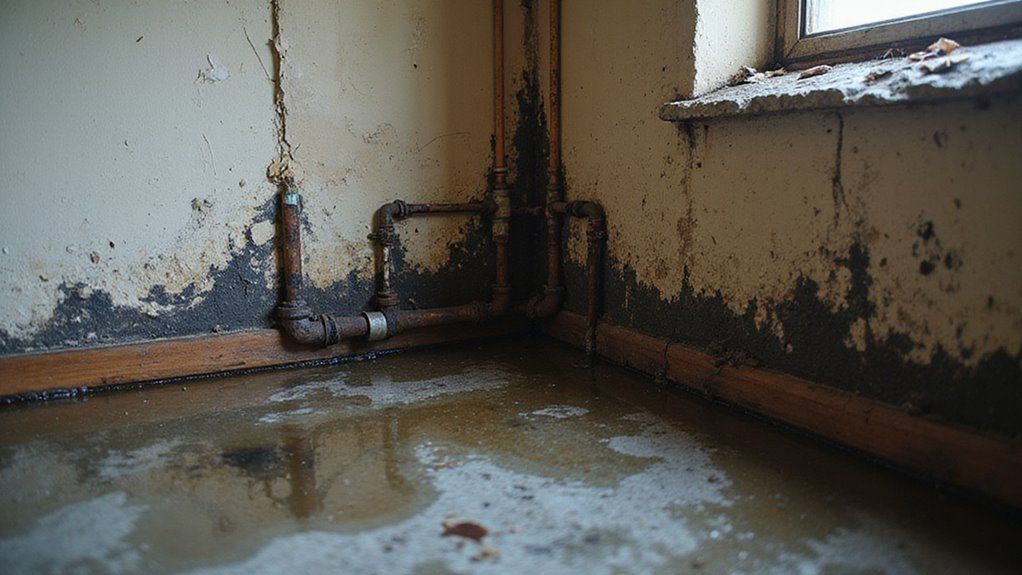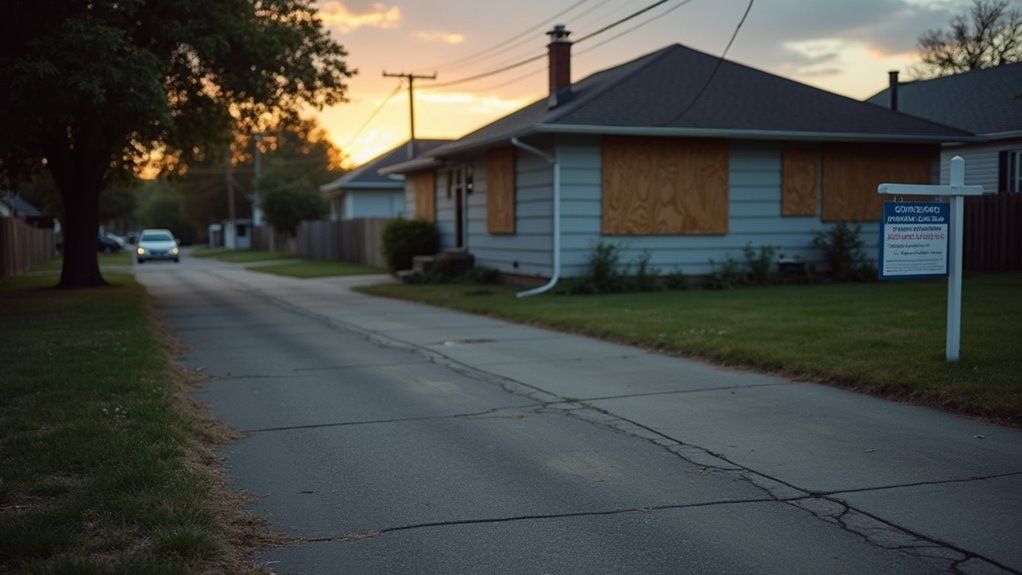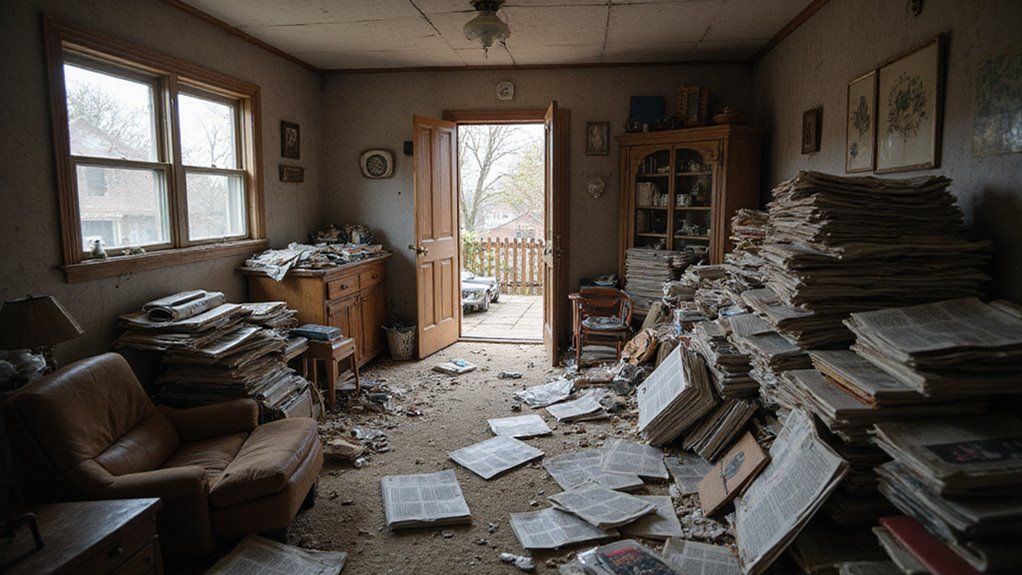How Mold and Water Damage Affect Home Value

Mold and water damage can quietly destroy your home’s value. These issues are often hidden but can cause major problems later. Many homeowners do not realize the full impact until it is too late.
Buyers quickly notice stains, musty smells, and warped walls. They may worry about costly repairs and health risks. This fear can drive down your home’s price or scare off buyers completely.
Mold and water damage can significantly lower your home’s market value. You should address these issues early before selling.
Quick action can protect your investment and attract more buyers. This blog will guide you through simple steps to fix mold and water damage and boost your home’s value.
Key Takeaways
- Mold and water damage reduce a home's appraised value due to perceived repair costs and potential health risks.
- Visible damage, stains, or musty odors deter buyers and prolong time on the market.
- Unresolved issues in inspection reports can lead to lower offers or failed sales.
- Insurance claims for water or mold damage may increase premiums, lowering the property’s attractiveness to buyers.
- Timely professional repairs and thorough documentation help restore value and boost buyer confidence.
Understanding the Causes of Mold and Water Damage
Mold and water damage are usually caused by ongoing problems in a home. Water often enters through leaky roofs, faulty plumbing, or poor drainage. If these issues are not fixed, mold can appear over time.
Selling your house fast in Lakewood can help prevent further damage and deterioration caused by unresolved water issues. Small leaks can create damp areas where mold grows. Poor ventilation makes this worse by trapping moisture inside. If you see signs of leaks, you should repair them quickly.
Regular home maintenance can prevent most mold problems. Cleaning gutters and sealing windows helps keep water out. Ignoring these issues can lead to scaling of mold issues that compromise your home's structural integrity and value. If you ignore these tasks, your home is at greater risk for damage.
Common Signs Buyers Notice Immediately
When buyers walk through your home, they immediately notice visible stains, discoloration on walls or ceilings, and any lingering musty odors. These warning signs often signal underlying water or mold issues that can’t be ignored. If you overlook them, you risk turning away serious buyers before negotiations even begin.
Additionally, proper maintenance can prevent these issues from escalating and affecting your home's value. Regular inspections and prompt repairs are essential in preserving home quality and avoiding costly corrections later.
Visible Stains and Discoloration
Visible stains and discoloration are warning signs for home buyers. These marks make a home look uncared for. Buyers may worry about water leaks, mold, or poor maintenance.
Common stains include brown or yellow spots on ceilings and walls. Dark streaks may point to mold. Faded paint and peeling surfaces can mean water damage.
If you see these problems, you should fix them quickly. Unaddressed damage often leads to lower offers and more questions from buyers. Prompt repairs can protect your home’s value.
Musty Odors Indoors
A musty smell in a house is often a warning sign. It suggests there might be mold or water damage present. Buyers notice this even before they see any other problems.
This odor makes people think repairs will be needed. Air fresheners or open windows will not remove the smell. The scent usually lingers and can cause concern.
If buyers notice a musty odor, they may look for more damage. Some might offer less money or not buy the house at all. Musty smells can lower a home’s value quickly.
The Health Risks Associated With Mold
You can't ignore the health risks mold brings, especially in relation to respiratory issues. Mold exposure often triggers allergic reactions and heightens sensitivity in both children and adults.
These health concerns don't just affect comfort—they can significantly impact your home's appeal and value. Understanding the costs associated with mold removal can help homeowners weigh the benefits of prompt remediation.
Respiratory Issues From Mold
Mold can cause several respiratory issues when present in your home. Breathing in mold spores may harm your lungs and airways. People with asthma or allergies are at higher risk.
Mold exposure may lead to coughing and throat irritation. Some people might have shortness of breath or more frequent asthma attacks. Chronic lung diseases can get worse with ongoing exposure.
Children, elderly people, and those with weak immune systems face a greater risk of infections. Mold can also make existing breathing problems harder to manage. If you notice mold, remove it quickly to protect your health.
Allergic Reactions and Sensitivity
Mold can cause problems for people with allergies or sensitivities. If you are allergic, even a small amount of mold may trigger symptoms. These symptoms can include sneezing, itchy eyes, and skin irritation.
Mold spores spread easily inside homes, especially in damp or humid places. Poor ventilation can make the problem worse. If you have indoor plants, they might develop mold if overwatered or kept in wet areas.
Air purifiers with HEPA filters can help by trapping mold spores and reducing allergens in the air. Using one can bring relief if you are sensitive to mold. Ignoring mold issues may also lower your home's value, as buyers may worry about health risks.
How Water Damage Impacts Structural Integrity
Water damage can weaken a building’s structure. When water gets into materials like wood or drywall, it causes them to break down. This can make the whole house less safe.
If wood gets wet, it may rot and lose its strength. Wet soil under the foundation can shift or crack the base of the house. Damaged drywall can sag or even fall apart.
Metal fasteners such as nails and screws can rust if exposed to moisture. This rust makes connections weaker. If water damage is not fixed quickly, repairs can become more difficult and expensive.
Fixing water problems early helps keep your home safe and valuable. If you wait too long, you might face bigger repairs. Always address water damage as soon as you notice it. Additionally, structural integrity can be compromised over time if water infiltration is not properly remediated.
Appraiser Red Flags: What Gets Noticed
Appraisers quickly notice mold and water damage because these issues affect your home’s value. They look for visible mold, stains, and musty smells. If they find any signs, they may lower the home’s value.
Signs like warped floors or peeling paint can show hidden water problems. Appraisers may mark your home for more inspection if they see these. They check if water has damaged materials or caused health risks.
Even small patches of mold or slight discoloration get their attention. If these are present, the appraiser may recommend repairs. Buyers may want these problems fixed before making an offer. Water damage can lead to costly repairs and decreased curb appeal, further impacting valuation.
The Cost of Professional Mold Remediation
Professional mold remediation can be expensive. The total cost depends on the size, location, and type of mold problem. Small jobs may cost $500, while severe cases can be over $6,000. Navigating Distressed Sales can also influence pricing, especially if the extent of damage is uncertain.
Larger areas or tough-to-reach spots will increase the price. If special tools or containment are needed, costs go up too. Extra repairs after mold removal will also add to your expenses. Mold prevention and early water damage fixes are much cheaper than full remediation. If you act quickly, you can avoid high costs later. Professionals can inspect for hidden mold and fix the moisture that causes it.
Impact on Home Insurance and Claims
You’ll need to pay close attention to your insurance policy, as many exclude coverage for mold and gradual water damage. Even if you file a claim, insurers often challenge approval, citing lack of maintenance or pre-existing conditions. If your claim does go through, you’re likely to face higher premiums or stricter policy terms in the future.
Additionally, understanding the reputation of cash buyers can help prevent further complications if you are selling a property affected by water or mold issues. Properly assessing the condition of the home can also influence insurance eligibility and claims processing.
Insurance Policy Exclusions
Home insurance often does not cover all types of mold or water damage. Most policies list specific situations they will not pay for. You should know these limits to avoid surprise expenses.
If mold comes from slow leaks or poor upkeep, insurance will usually not pay. Some policies set a maximum amount for mold cleanup. You may pay extra costs if damage goes beyond this cap.
Sudden water problems, like a burst pipe, may be covered. Gradual water damage is often excluded from standard policies. Flood damage is almost always excluded and needs a separate flood policy.
If you read your policy carefully, you can spot these limits. Knowing what is not covered helps you plan better. If you have questions, ask your insurance agent for more details.
Claim Approval Challenges
Insurance companies often make it hard to get claims for mold or water damage approved. They require detailed records, fast reporting, and proof that the damage happened suddenly. If you do not meet these requirements, your claim might be denied.
Missing deadlines or not having enough evidence can lead to quick claim rejection. Disagreements about what your policy covers may cause disputes. If you think your claim was wrongly denied, it could turn into a legal issue.
Premium Increase Risks
A water or mold damage claim can raise your home insurance premium quickly. Insurers see these claims as signs of increased risk. If you file a claim, your insurer may raise your premium or limit your coverage.
Your insurance cost can rise more if you have multiple claims or severe damage. Regional issues with water or mold can also affect your premium. Insurers may add policy limits or exclusions after a claim.
A higher premium can make your home harder to sell. Buyers might worry about ongoing higher insurance costs. These changes can affect your home's value and marketability.
Disclosure Laws and Seller Responsibilities
Sellers must follow disclosure laws when selling a home. Most states require you to tell buyers about any known mold or water damage. This protects buyers and helps them make informed decisions. Essential documents, such as inspection reports or maintenance receipts, can provide supporting evidence of the property's condition.
Homeowners are legally required to share information about past or current damage. If you do not disclose, you could face lawsuits or fines later. Disclosure forms usually ask for details about the type and extent of damage or repairs.
Accurate information builds trust with buyers and protects you from legal problems. If you are unsure about your duties, contact a real estate expert or property lawyer. Being honest is not optional; it is your legal responsibility. Additionally, understanding property issues like mold and water damage can help you navigate legal disclosures more effectively.
How Mold and Water Damage Affect Marketability
Mold and water damage can make a home much harder to sell. Most buyers see these problems as signs of bigger issues. The property becomes less attractive and loses buyer trust.
If a home has mold or water damage, fewer buyers will consider it. The house may sit on the market longer because of health and safety worries. Appraisal values often drop when damage is visible or suspected.
Conducting thorough pricing and marketing strategies helps sellers understand how to position their property despite these issues.
Homes with these issues can also fail inspections for air quality or moisture. Sellers should fix mold and water problems before listing. Early repairs make it easier to sell and help keep the value higher.
Negotiating Power: Buyer Leverage in Damaged Homes
When you’re negotiating for a home with mold or water damage, you gain significant influence to demand price reductions and favorable terms. Use inspection contingencies to secure professional assessments and strengthen your bargaining position.
By quantifying repair costs, you can negotiate for credits or require the seller to address issues before closing. Additionally, understanding legal disclosure requirements can give you an advantage in ensuring all property issues are properly communicated.
Price Reduction Opportunities
Mold and water damage often make homes harder to sell. These problems can help you negotiate a lower price. Sellers know such issues lower the value of their property.
You can show estimates for repair costs to support your offer. If you mention possible hidden damage, sellers may worry about future expenses. Bringing up the home’s history of mold or water issues can also help your case.
Fewer buyers are interested in homes with these problems. This situation gives you more power during price talks. Sellers may accept a lower price to avoid more delays or repair costs.
Inspection Contingency Strategies
Inspection contingencies help buyers avoid homes with mold or water damage. If these problems appear, buyers can back out or renegotiate. This protects buyers from hidden repair costs.
Buyers should use inspection results to ask for proof of past repairs or mold prevention. Sellers know a failed inspection can end the sale, so they are often more open to negotiation. If inspectors find problems, buyers can request detailed reports.
If reports show poor repairs or unresolved damage, buyers gain more bargaining power. Conditionals in the contract let buyers avoid taking on serious issues. This strategy helps buyers avoid unexpected problems after moving in.
Repair Cost Negotiations
If an inspection finds mold or water damage, you gain an advantage in repair cost talks. These problems lower the home’s value and make closing harder. You can use this to ask for lower costs or repairs.
Buyers should collect evidence before negotiating. Request mold test reports, repair estimates, and insurance claim details. This proof helps support your requests.
You can ask for a price cut to cover mold or water damage repairs. Some buyers require sellers to fix the problems before closing, using licensed workers. Others might ask the seller to transfer active insurance claims for future repairs.
If the seller does not meet your terms, use the inspection report to delay or leave the deal. This approach can protect your investment and give you more control.
The Role of Home Inspections in Value Reduction
Home inspections can lower your home’s value if mold or water damage is found. Buyers often see these issues as serious problems. This can make your home less attractive to them.
The inspection report lists problems and estimates repair costs. Buyers may ask for price reductions to cover these repairs. If repairs are not well documented, buyers may lose trust.
Unresolved issues in the report can lead to lower offers. Some buyers may even decide not to buy your home. If you want the best price, it is important to fix and document repairs before selling.
Repair vs. Replacement: Cost-Benefit Analysis
You should compare the costs and benefits of repair versus replacement after finding mold and water damage. Repairs cost less at first but may only hide bigger problems. Replacements cost more but can solve the issue for good.
The amount of damage will affect your decision. If damage is deep, replacement is often safer. Repairs might be enough for small, surface issues.
Long-term risks of mold coming back should be considered. Recurring problems can lower your home's value. Buyers may worry about future repairs.
Insurance may cover some costs, but policies often have limits. Check your policy before choosing an option. Weigh all these factors to make the best choice.
Strategies to Restore Home Value After Damage
Mold and water damage can lower your home’s value. You can restore your home’s value if you use the right repair steps. Proper restoration also helps attract buyers.
Start with professional mold removal to eliminate health risks. If you hire experts, your home will meet safety standards. Save all paperwork about the work done for future buyers.
Begin with expert mold removal to ensure safety and provide documentation so future buyers know your home meets health standards.
You should replace any damaged drywall, insulation, or flooring. This will help your home look good and stay strong. If repairs are done well, buyers will see your home is cared for.
Fix leaks and add better drainage to prevent future water problems. You can also invest in waterproofing to protect your home long-term. A clean and repaired home can regain its market value.
Preventative Measures to Protect Your Investment
Preventative measures help protect your property from mold and water damage. These steps keep your investment safe and maintain your home’s value. Early action can prevent bigger problems later.
Roof and foundation checks are important. Fix any leaks or cracks as soon as you find them. If you notice damage, repair it quickly.
Proper water barriers, such as sump pumps, keep moisture away. Regularly maintain these systems to ensure they work well. If water collects near your home, improve drainage.
Ventilation in bathrooms, kitchens, and basements reduces humidity. If these areas stay dry, mold is less likely to grow. Open windows or use fans when possible.
Clean gutters and downspouts often to guide water away from your house. If gutters are blocked, clear them to prevent overflow. Consistent upkeep lowers the risk of damage over time.
Conclusion
If homeowners fail to address mold and water damage, they risk lowering their property value and harming their health. Mold issues can turn away potential buyers and cause financial loss. Taking quick action to fix problems can protect your investment.
If you want to avoid repairs and sell quickly, we can help. We buy houses for cash, no matter their condition. This option allows you to skip costly repairs and lengthy listing processes.
If you are ready to sell or want to learn more, contact us at Jay Primrose Properties. We offer fair cash offers and a simple process. Let us help you move forward with confidence.
Give us a call anytime at 253-697-0007 or fill out this quick form to get started today!
Get A Fair Cash Offer On Your House

About the author
Justin Baker
Justin Baker is the founder of Jay Primrose Properties, a leading cash home buying company based in Tacoma, WA. With a passion for real estate investing, Justin has helped numerous homeowners in the Pacific Northwest region sell their homes quickly and hassle-free. Justin believes that buying and selling real estate should be a seamless process and works tirelessly to ensure that his clients have a stress-free experience. With a deep understanding of the local real estate market and a commitment to exceptional customer service, Justin has established himself as a trusted and reliable cash home buyer in Tacoma and the surrounding areas.











